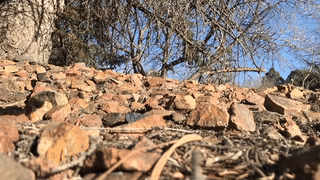Celebrate-Today
Grand-Tetons
Happy birthday Grand Tetons!
 |
| Photo NPS/Tobiason |
If you haven't been to the Tetons, they're a little difficult to describe, and even photos don't do them justice. And as you view them close or from a distance, even if you live here like I do, it's always like seeing them for the first time.
As you approach the Tetons, you will feel them. At least I do. It starts as a low hum in my ears, and then I can feel it in my chest. A kind of deep, vibrating thrum. I first noticed it as a child. It was almost like they were speaking to me in someway. It's calming and peaceful. I'm interested in hearing if anyone else experiences it too. I always have, but it's difficult to put into words, and I'll stop now so I don't scare you off!
The naming of the mountains is credited to early 19th-century French-speaking trappers—les trois tétons (the three teats) was later shortened to Tetons. At 13,775 feet, the Grand Teton rises more than 7,000 feet above Jackson Hole, almost 850 feet higher than Mount Owen, the second-highest summit in the range.
The park has numerous lakes, including the 15-mile-long Jackson Lake and streams of varying length and the upper main stem of the Snake River. Though now in recession, a dozen small glaciers linger at the higher elevations near the highest peaks. Some of the rocks in the park are the oldest found in any U.S. National Park and have been dated at nearly 2.7 billion years!
The struggles to preserve this region as a national park began in the late 19th century, and in 1929 Grand Teton National Park was established, protecting the Teton Range's major peaks. The valley of Jackson Hole remained in private ownership until the 1930s, when some conservationists led by John D. Rockefeller, Jr. began purchasing land in Jackson Hole to be added to the existing national park. With repeated Congressional efforts to repeal the measures, much of Jackson Hole was set aside for protection as Jackson Hole National Monument in 1943. The monument was abolished in 1950 and most of the monument land was added to Grand Teton National Park.
One of the things I love about the Grand Teton National Park is the almost pristine ecosystem and the same species of flora and fauna that have existed since prehistoric times can still be found here. That is so cool. More than 1,000 species of vascular plants, dozens of species of mammals, 300 species of birds, more than a dozen fish species and a few species of reptiles and amphibians exist.
Due to various changes in the ecosystem, some of them human-induced, efforts have been made to provide enhanced protection to some species of native fish and the increasingly threatened whitebark pine. Hopefully this will continue.
So, happy birthday Grand Teton National Park. You've been a special part of my life, and I know many other's feel the same way! =]:)












0 comments
Please let me know what you think. =]:)